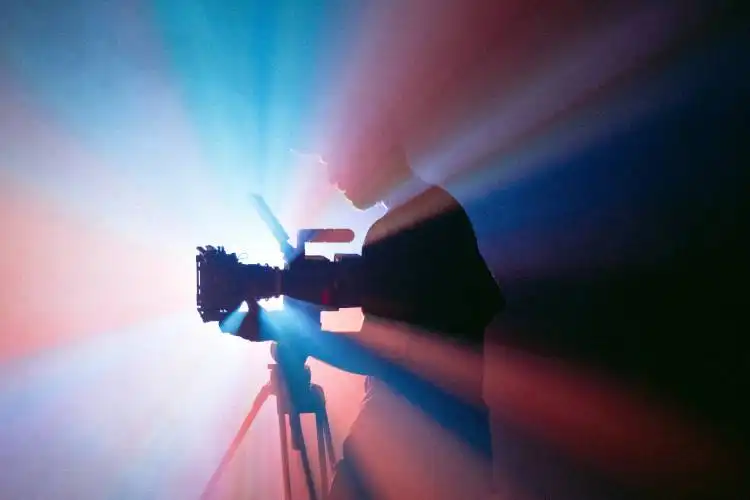Start a Stunt Design Business
Thrilling Journeys: Choreographing Spectacle in the Film Industry
| Updated


STUNT DESIGN BUSINESS
Launching a stunt design business is for those brave souls who marry creativity with adrenaline. This unusual but exciting venture caters to the film and entertainment industry, crafting thrilling, high-octane stunt sequences that leave audiences gasping! As a stunt designer, your job is to choreograph and engineer jaw-dropping action scenes while ensuring the safety of all involved. The film industry's never-ending thirst for heart-stopping action essentially mean your talents will always be in demand. Buckle up, because this business is one incredible ride!
Jump to Business Plan
RELATED BUSINESS IDEAS
Browse ALL Music & Entertainment Ventures Business Ideas
Discover Your Perfect Domain
Unlock the door to your online success with our hand-picked selection of premium domain names. Whether you're starting a new venture or rebranding an existing one, the right domain can set the tone for your digital presence. Browse through our curated list, each with its unique potential to enhance your brand's visibility and credibility.
STUNT DESIGN MINI BUSINESS PLAN
This a quick reality check to help you identify the strengths and weaknesses of your business concept before you dive in.
Expected Percent Margin:
- Gross Margin: 40-60%
- Net Profit Margin: 15-25%
Earnings Expectations:
- Daily Earnings: $500 - $1,000
- Weekly Earnings: $3,500 - $7,000
- Monthly Earnings: $14,000 - $30,000
- Annual Earnings: $168,000 - $360,000
Actions to Achieve These Numbers:
Stunt Design:
- Investment in Equipment: Allocate around $5,000-$20,000 for initial stunt equipment.
- Stunt Training: Be trained in and knowledgeable about all aspects of stunt coordination and design.
Marketing and Client Acquisition:
- Networking: Regularly attend industry networking events.
- Demonstration Reel: Spend money on a high-quality reel showing off your best work.
Stunt Execution:
- Professional Network: Establish a network of dependable professional stunt performers.
- Insurance: Secure proper liability and worker's compensation insurance, which could be in the range of $5,000 to $20,000 per year.
Cost Control:
- Project Contract: Have a well-prepared contract for each project to minimize any unexpected costs.
- Equipment Maintenance: Regularly maintain your equipment to avoid costly replacements.
Business Operations:
- Project Volume: Strive for 1-2 weekly projects depending on the complexity and your team's capacity.
- Quoting: Depending on the complexity of the project, try to charge within the range of $1,000 to $5,000 per project.
These estimations could vary dramatically depending on industry norms, target market, location, scale of projects, and individual business strategies. It's essential to talk with a financial advisor before making big decisions.
NOT WHAT YOU HAD IN MIND? Here are more ideas



Browse ALL Music & Entertainment Ventures Business Ideas
Grab Your Business Website Name
Before you get caught up in the whirlwind of setting up your business, invest in a domain name. It's a small but significant step that lays the foundation for your brand and makes it easier for customers to find and trust you. Just like you wouldn't build a house without securing the land first, don't build a business without securing your domain name.
"Why? Can't that wait?" Here's why it shouldn't
Step 1: Determine if the Business is Right Endeavor
Breakdown of Startup Expenses
Before starting a stunt design business, it is important to understand the startup costs associated with the venture. This includes the costs of any equipment needed, such as safety gear, cameras, and other materials. Additionally, the cost of any licenses or permits necessary to operate the business should be factored in. It is also important to consider the cost of marketing and advertising, as well as any legal fees associated with setting up the business. Finally, the cost of any insurance that may be necessary should be taken into account.
Breakdown of Ongoing Expenses
In addition to the startup costs, it is important to consider the ongoing expenses associated with running a stunt design business. This includes the cost of any supplies or materials needed for the business, such as safety gear, cameras, and other materials. Additionally, the cost of any licenses or permits that may be necessary to operate the business should be factored in. It is also important to consider the cost of marketing and advertising, as well as any legal fees associated with running the business. Finally, the cost of any insurance that may be necessary should be taken into account.
Examples of Ways to Make Money
There are a variety of ways to make money with a stunt design business. One way is to offer services to film and television productions. This could include designing stunts for specific scenes, or providing stunt performers for a particular production. Additionally, the business could offer services to other businesses, such as designing stunts for commercials or other promotional materials. Finally, the business could offer classes or workshops on stunt design and safety, which could be a great way to generate income.
Step 2: Name the Business
When choosing a name for a business, it is important to consider the type of business and the target audience. It is also important to consider the potential for growth and the ability to stand out from the competition. It is also important to consider the legal implications of the name, such as trademarking and copyrighting. Additionally, it is important to make sure the name is easy to remember and pronounce. When choosing a name, it is important to brainstorm and come up with a list of potential names that fit the criteria. It is also important to research the names to make sure they are not already taken. Finally, it is important to get feedback from friends, family, and potential customers to make sure the name resonates with the target audience.
Step 3: Create a Business Plan
A business plan is an essential document for any business, and it should include a detailed description of the business, its goals, and how it plans to achieve them. It should also include a financial plan, which should include a breakdown of startup expenses, ongoing expenses, and potential sources of revenue. Additionally, it should include a marketing plan, which should include an analysis of the target market, a description of the product or service, and a plan for how to reach potential customers. Finally, it should include an operations plan, which should include a description of the business’s organizational structure, a description of the business’s processes, and a description of the business’s legal structure.
Tips for Writing a Business Plan
When writing a business plan, it is important to be as detailed as possible. Start by researching the industry and competitors, and then use that information to create a plan that is tailored to the business. Additionally, it is important to be realistic when creating financial projections. It is also important to be aware of the legal requirements for the business, such as licensing and permits. Finally, it is important to review the plan regularly and make adjustments as needed.
Step 4: Obtain Necessary Licenses and Permits
When starting a stunt design business, it is important to understand the licenses and permits that are necessary for the business to operate legally. Depending on the state and local laws, the business may need a business license, a permit to operate, and a permit to use the equipment. Additionally, the business may need to obtain a license to perform stunts in public places.
Research Local Laws
Before obtaining any licenses and permits, it is important to research the local laws to ensure that the business is in compliance with all regulations. This includes researching the types of licenses and permits that are required, as well as any restrictions that may be in place. Additionally, it is important to research the fees associated with obtaining the necessary licenses and permits.
Apply for Necessary Licenses and Permits
Once the research is complete, the business can begin the process of applying for the necessary licenses and permits. This process may involve filling out applications, submitting documents, and paying the required fees. Additionally, the business may need to provide proof of insurance, as well as proof of safety training.
Maintain Licenses and Permits
Once the licenses and permits have been obtained, it is important to maintain them. This includes renewing them when necessary, as well as ensuring that the business is in compliance with all regulations. Additionally, the business should keep track of any changes in the laws that may affect the licenses and permits.
Step 5: Find a Location
Finding the right location for a stunt design business is key to success. It should be a place that is easily accessible and has enough space to accommodate the necessary equipment. It should also be a place that is safe and secure, as stunt design can be a dangerous business. Consider factors such as the cost of rent, the availability of nearby suppliers, and the local regulations.
Research Local Regulations
When starting a business, it is important to research the local regulations and laws that may apply. This includes zoning laws, safety regulations, and permits. It is also important to research any insurance requirements that may be necessary. This will help ensure that the business is compliant with all applicable laws and regulations.
Consider the Cost of Rent
The cost of rent is an important factor to consider when selecting a location for a stunt design business. It is important to find a location that is affordable and within budget. Consider the size of the space needed and the cost of rent in the area. It is also important to consider the cost of utilities and any other fees associated with renting the space.
Look for Nearby Suppliers
When selecting a location for a stunt design business, it is important to look for nearby suppliers. This will help ensure that the necessary equipment and materials can be easily obtained. Consider the availability of suppliers in the area and the cost of the supplies. It is also important to research the quality of the supplies to ensure that they are suitable for the business.
Ensure the Location is Safe and Secure
Safety and security should be a top priority when selecting a location for a stunt design business. Consider the safety of the area and the security measures that are in place. It is also important to research the local crime rate and any other potential risks that may be present. This will help ensure that the business is operating in a safe and secure environment.
Step 6: Purchase Equipment
When starting a stunt design business, there are certain pieces of equipment that are essential for the business to run smoothly. This includes safety gear for the stunt performers, props and set pieces, and any other items needed for the stunts. It is important to purchase the best quality equipment possible, as it will ensure the safety of the stunt performers and the success of the stunts.
Research
Before purchasing any equipment, it is important to do research on the different types of equipment available and the best prices for each item. It is also important to research the different safety regulations and standards that must be met in order to ensure the safety of the stunt performers. Additionally, researching the different types of props and set pieces that may be needed for the stunts is also important.
Budget
Once the necessary equipment has been identified, it is important to create a budget for the equipment purchases. This budget should include the cost of the equipment, as well as any shipping and handling fees. It is important to stick to the budget in order to ensure that the business does not overspend.
Purchase
Once the budget has been created, it is time to purchase the necessary equipment. It is important to purchase the best quality equipment possible, as it will ensure the safety of the stunt performers and the success of the stunts. Additionally, it is important to purchase the equipment from a reputable vendor in order to ensure that the equipment is safe and of good quality.
Maintenance
Once the equipment has been purchased, it is important to maintain it properly. This includes regularly inspecting the equipment for any signs of wear and tear, as well as cleaning and lubricating the equipment as needed. Additionally, it is important to store the equipment in a safe and secure location in order to ensure that it is not damaged or stolen.
Step 7: Market the Business
When it comes to marketing a stunt design business, there are a variety of ways to get the word out. Social media is a great way to start, as it is free and can reach a wide audience. Creating a website and blog can also help to attract potential customers. Additionally, attending events and conventions related to stunt design can help to spread the word about the business. Finally, advertising in local newspapers and magazines can be beneficial as well.
Develop a Brand
Developing a brand is an important part of marketing the business. This includes creating a logo, slogan, and other visuals that will help to set the business apart from the competition. Additionally, it is important to create a website that is professional, easy to navigate, and provides potential customers with the information they need. Finally, it is important to create a consistent message across all marketing materials to ensure that customers have a clear understanding of what the business offers.
Step 8: Hire Employees
When it comes to hiring employees for a stunt design business, it is important to look for individuals who have experience in the field. It is also important to look for individuals who have a good attitude and are willing to learn. Additionally, it is important to look for individuals who have a good understanding of safety protocols and who can think on their feet. It is also important to look for individuals who are comfortable working with other people and who can work well in a team environment.
Benefits of Hiring Employees
Having employees can help to make the business more efficient and can help to free up the business owner’s time. Employees can also help to bring in new ideas and can help to create a more diverse work environment. Additionally, having employees can help to create a sense of accountability and can help to create a more reliable work environment. Finally, having employees can help to create a more professional image for the business and can help to make the business more successful.
Step 9: Monitor Business Performance
Monitoring the performance of your business is essential to its success. This includes tracking sales, expenses, profits, and customer feedback. It also involves staying up to date on industry trends and changes in the market. To do this, you should create a system for tracking your business performance. This could include using a spreadsheet or a specialized software program. You should also set up a system for collecting customer feedback, such as surveys or customer service forms.
Analyzing Performance
Once you have a system in place for tracking your business performance, you should analyze the data regularly. This will allow you to identify areas of success and areas that need improvement. You should also use the data to make decisions about the future of your business. For example, you may decide to focus on certain products or services based on customer feedback or market trends.
Making Changes
Once you have identified areas of improvement, you should make changes to your business accordingly. This could include changes to your products or services, marketing strategies, or customer service policies. You should also consider investing in new technology or equipment to improve your business performance.
Re-evaluating Goals
Finally, you should re-evaluate your business goals on a regular basis. This will help you stay focused on your long-term objectives and ensure that you are making progress towards them. You should also use this time to adjust your goals if needed. For example, if you find that your sales are lower than expected, you may need to adjust your goals to reflect this.
EXPLORE MORE CATEGORIES
Browse ALL Business Idea Categories
TAKE THE NEXT STEPS










